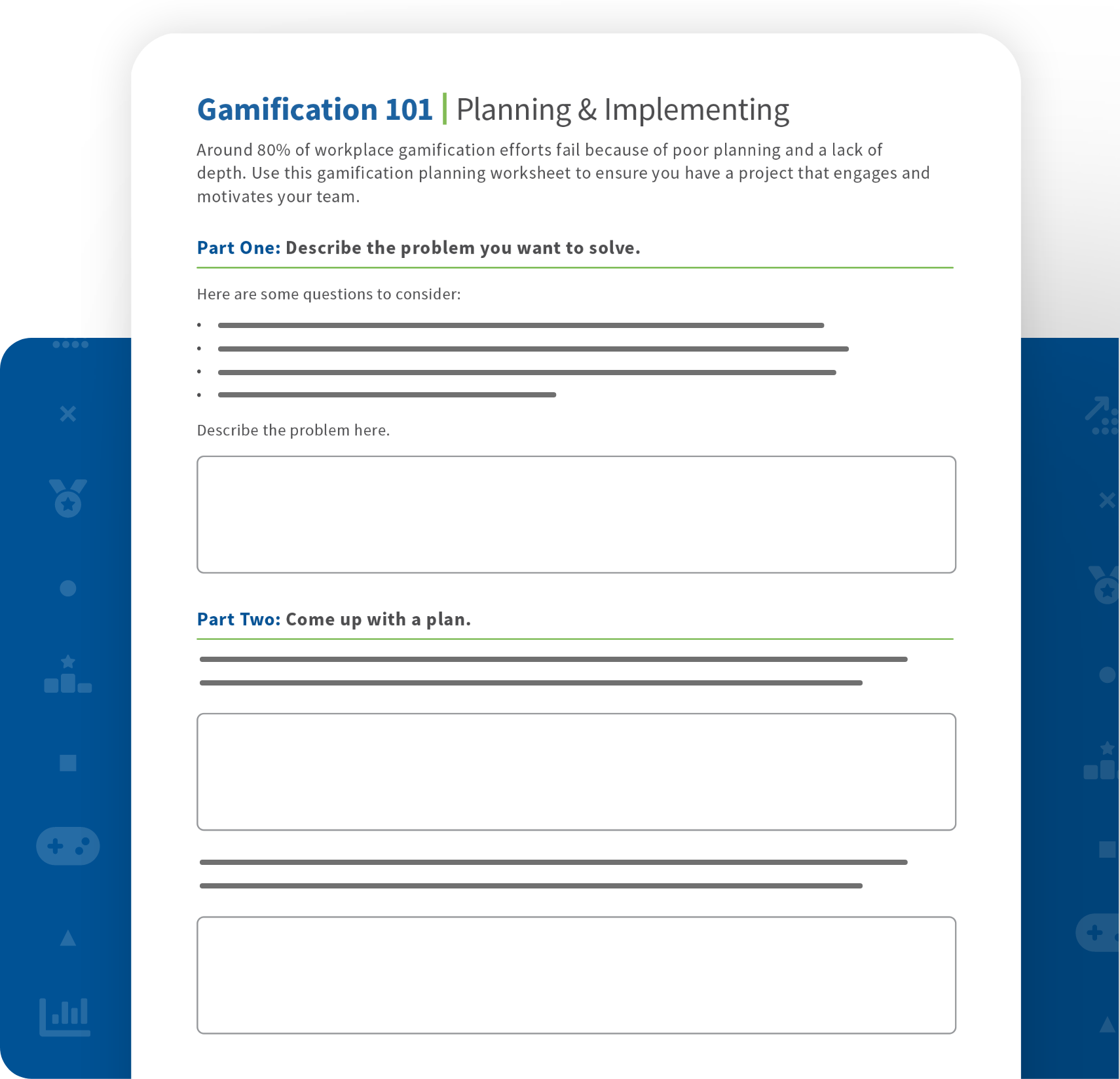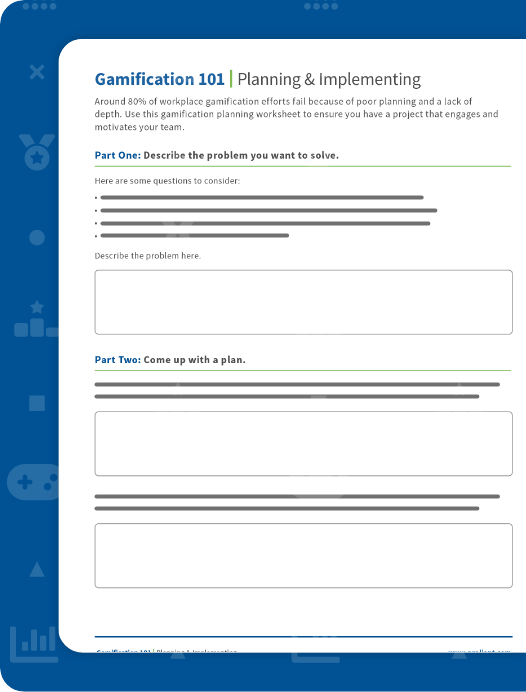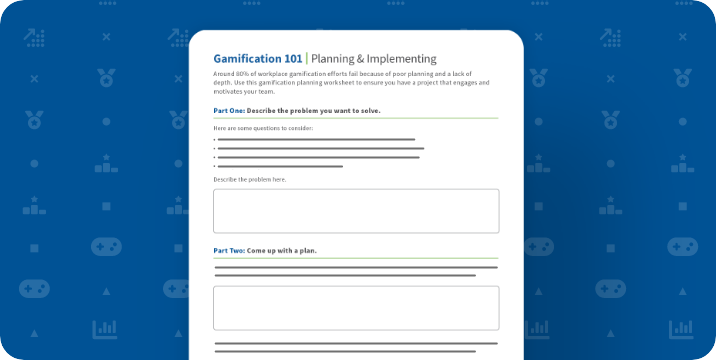WORKSHEET
Spark Productivity in Your Workplace with Proliant’s Gamification 101 Worksheet





By adding elements of gaming to your workplace, employees are encouraged to complete specific actions or tasks, increasing engagement and productivity through healthy competition. With an effective gamification plan, your company can significantly increase profitability, production, and employee retention.